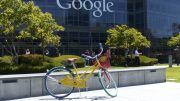 Hydrogen is the primary candidate to take on the long-term role of energy storage in a system that relies heavily on non-programmable renewable sources such as solar and wind. But even though hydrogen is environmentally friendly, produces no emissions and has a high energy density compared to other fuels, it is more challenging to store. Unless, of course, it turns to dust.
Hydrogen is the primary candidate to take on the long-term role of energy storage in a system that relies heavily on non-programmable renewable sources such as solar and wind. But even though hydrogen is environmentally friendly, produces no emissions and has a high energy density compared to other fuels, it is more challenging to store. Unless, of course, it turns to dust.
While production remains a priority, safe and successful storage options are critical to meet demand and deliver fuel efficiently.
Storing hydrogen has proven to be a challenge. Conversion to liquid is the most used because it allows storing larger quantities in smaller spaces. Still, it requires extremely high pressures and usually low temperatures. For this reason, research has developed new methods to make it easier to manage and transport this clean fuel.
Some researchers at the University of Turin (Italy) focus on this issue. They are working on solutions for using solid-state hydrogen as an energy source. Their report, “Solid-State Hydrogen Storage Systems and the Relevance of a Gender Perspective,” provides an overview of the available vectors for solid-state hydrogen storage. The report highlights the challenges they face to become critical technologies for the energy transition, improving energy storage efficiency and smart grids.
According to the study, hydrogen storage by physisorption in metal-organic frameworks (MOFs), nanotubes, and graphene is possible. However, it has yet to be tested in larger prototypes. A more rising method is to use pure metals or inorganic compounds to form metal and complex hydrides. As the case may be, certain pure elements and intermetallic compounds form a hydride phase once the hydrogen has been absorbed. Conversely, hydrogen can be absorbed and released in solid solutions without changing the crystalline structure of the compound but only by increasing the lattice parameters.
Metal hydrides, in particular, can store large amounts of hydrogen, which can be easily removed at low pressure and near ambient temperature. Magnesium, for example, forms MgH2, a material with a high hydrogen storage capacity (volumetric density of H2 of about 130 kg H2·m-3 and gravimetric density of H2 of about 7.6 wt%).
Trapped hydrogen can be quickly released by adding as much heat as is generated during absorption or by changing the pressure. The most used metals are titanium, iron, manganese, nickel and magnesium. Adding small percentages of rare earths improves the conditions for formation and decomposition. It reduces the temperature or rate at which hydrogen is fixed and released. These compounds have been extensively researched in recent years.
They are the subject of experimental studies such as the European HyCare project. The project envisages the storage of about 50 kg of hydrogen on a solid carrier using metal hydride. The storage tank will be part of a renewable energy plant using H2 as an energy carrier for stationary energy storage. The recovered heat is used to desorb the hydrogen from the metal hydride. Finally, the released H2 powers a fuel cell that generates electricity.
There are only a few commercial applications. GKN Hydrogen has developed a hydrogen storage system based on an intermetallic alloy. GKN is launching small, medium and large hydrogen storage systems based on this technology. One example is the Arieshof of San Lorenzo in the Pusteria Valley (Italy), where GKN has implemented the solution for a self-sustaining organic farm.
Another possible way to store hydrogen is from Deakin University in Australia. Their scientists have developed a safe, environmentally friendly and energy-efficient method of storing gas. The study, published in the scientific journal Materials Today, describes the process used to preserve the gas in solid form. The particular component of the process is boron nitride powder, which is mixed with gases in a ball mill, a grinder with stainless steel balls inside. As the mill rotates, the collision between the steel balls and the boron nitride powder triggers a mechanochemical reaction that allows the powder to absorb the gas. The gas absorbed before is separated from the others by removing the dust from the mill. The process continues with the remaining gases.
There is no waste. The process requires no harsh chemicals, and it generates no byproducts. Boron nitride itself is a non-hazardous chemical compound. It means you can store gases anywhere and use them as needed. The powder can be transported easily and safely. To recover the gas, heat the boron nitride powder in a vacuum, which can then be reused up to fifty times.
The Australian team’s report claims that this method has a very high gas storage capacity because the milling process does not break down the gas molecules. The energy consumed to store and separate 1000 litres of gas is 76.8 KJ/s, almost 90% less than the energy consumed by the current separation process.
This discovery addresses the critical challenge of hydrogen storage by allowing large quantities of green hydrogen to be stored and safely transported in a solid state at a fraction of the energy cost.
So far, Deakin’s team has only been able to test their process on a small scale, separating about two to three litres of material. They hope to get industry support to scale up the discovery to a whole pilot plant. Moving from the lab to a larger industrial scale is the next challenge for a method of gas separation and storage faster than the traditional ones. A provisional patent application for their process has already been filed.
Alice Masili





